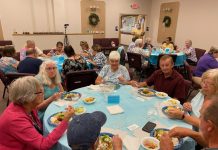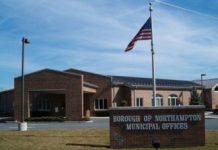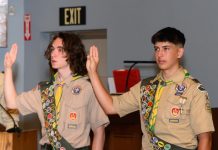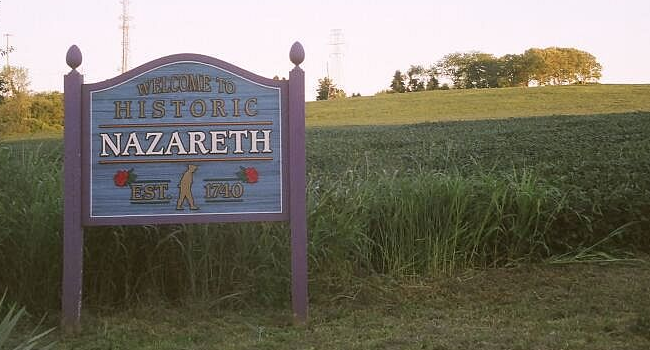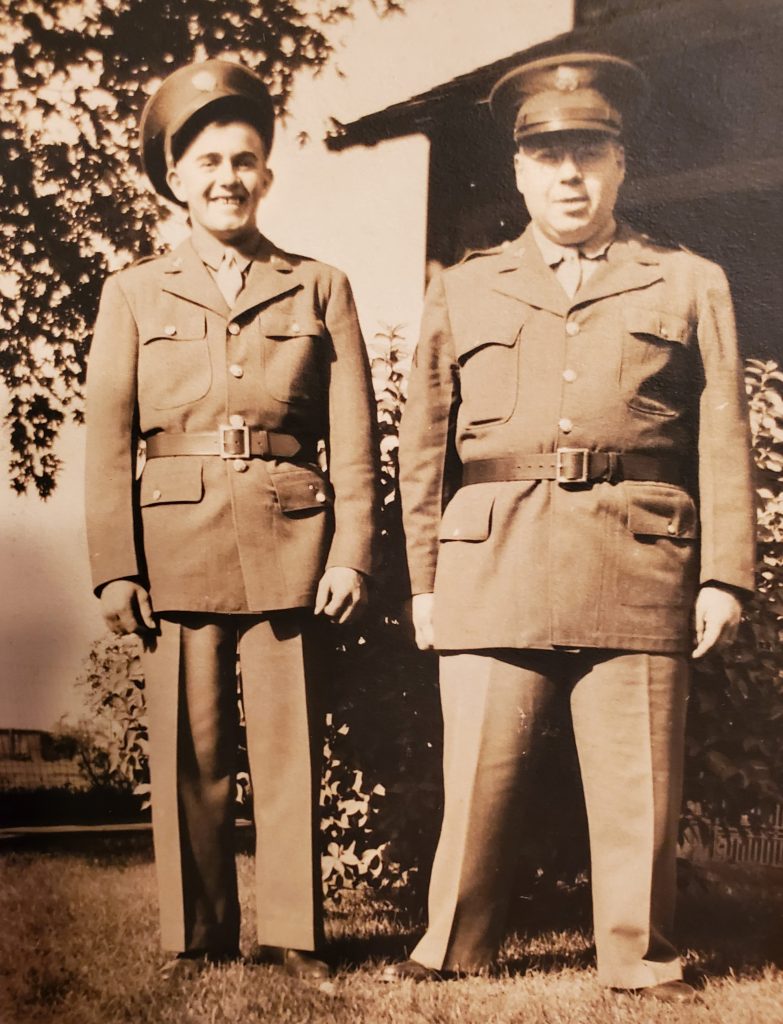
In this third column, Pvt. First Class Herbert Ruch, from Weaversville, is on one of the largest islands in the world – New Guinea. Few of the soldiers who landed there between 1942 and 1945 had really ever heard of the island. Now, it was a major war zone in the Pacific.
The island was under the control of Holland and Australia. The Japanese invaded the island in 1940 and constructed a large air field and naval base. The Japanese motive was to bomb and invade Australia. They constructed a system of tunnels and caves during their occupation. Jungle, monsoons and mountains made defeating the Japanese extremely difficult. Hand-to-hand combat was fierce; more than 216,000 Japanese, United States and Australian lives were lost in combat. More Japanese died from disease and starvation than in combat. When Pvt. Ruch landed on the island, there still were Japanese resisting in the mountains.
Pvt. Ruch’s engineering unit landed Nov. 7, 1944, at Finschhafen, New Guinea. On Nov. 10, they moved to their new base at Hollandia.
He wrote, “Things are happening, but I cannot write about it. We are living off the ground and have lots of work to do. We are hauling lumber to build things. Here, we have to get along with what we have and do the best of it. The island is hot, and I mean hot. The roads are very dusty, and the ground is the color red. Everything gets a rusty color.
“Thanksgiving dinner was not bad. We are allowed six cans of beer every eight days and three cartons of cigarettes a month. The unit laid pipelines and built refrigerators for blood plasma, which is needed at the front lines. They even built a washing machine.
“I see things every day I cannot write about. Something happened on Christmas evening that I never expected to happen. Our CO went haywire. He is now in the hospital at the present time. What caused this I do not know.
“Secretly, the engineers and all units were building inventories of supplies for the invasion of the Philippines. Some of the Navy men fought in the Battle of Leyte Gulf in the waters near the Philippine island of Leyte, considered the largest naval battle of World War II.”
Pvt. Ruch writes, “Lots of things are happening that you would not understand if I wrote about it in this letter. We have so much rain, we use chains for slick, muddy roads like we do at home for ice. Raincoats mean nothing.
“On May 14, I was personally shocked with the news that a very personal friend, Wilmer C. Saylor, was killed on April 6. Wilmer was in the Army and served in the Army in France. Put flowers on the altar in honor of Wilmer Saylor. He was like a brother to me.”
Cpl. Saylor was killed by a sniper in the last month of the war in Europe. His body was returned, and he was buried with honors at Greenwood Cemetery. Both Pvt. Ruch and Saylor were members of St. John’s church in Howertown, a few steps from the home of Pvt. Ruch.
New Guinea was littered with scars from the battle for control of the island. Japanese plane wreckage, destroyed vehicles and shells littered the landscape. Pvt. Ruch found a 40-mm cannon shell and 50-caliber and 20-caliber shells. He milled the brass shells into candlestick holders, which are now in his daughter’s dining room.
“We have been here for seven months,” he wrote. “We are going to leave New Guinea sometime after July 2. What we are going to bump into, no one knows. I can tell you the destination is Manila.”
In two weeks, we will be in Manila as well.

